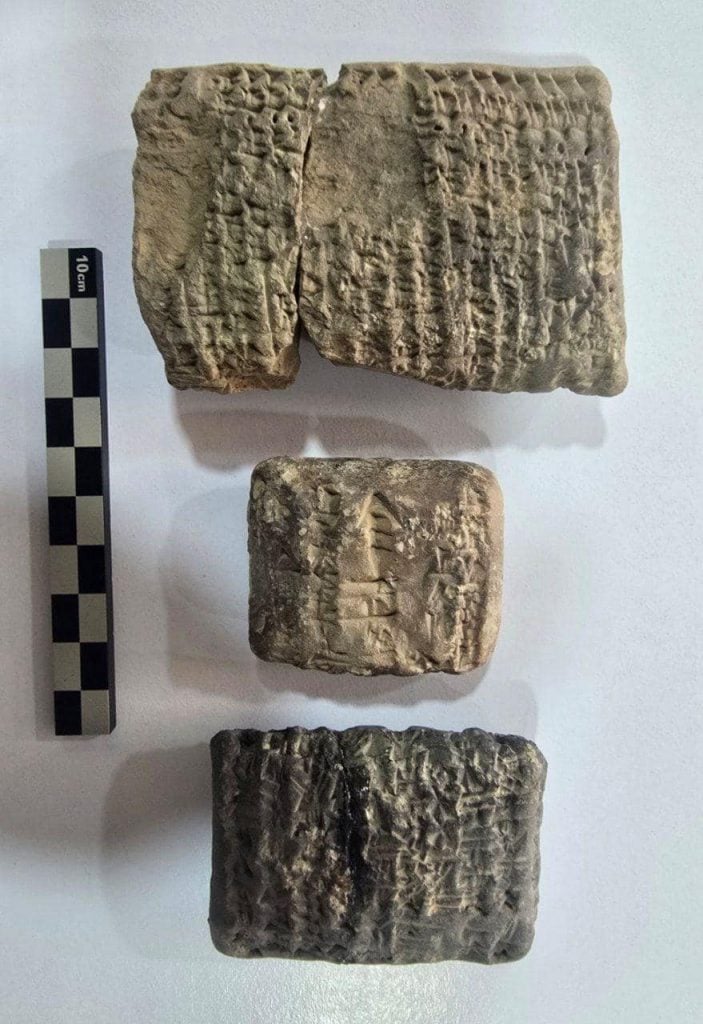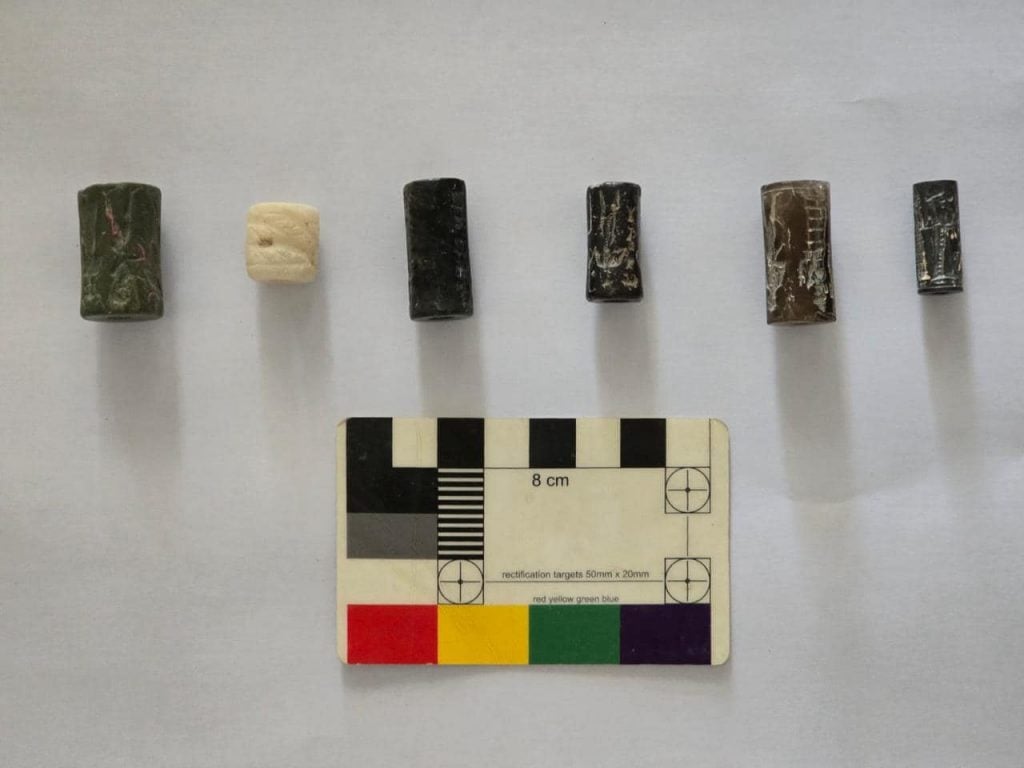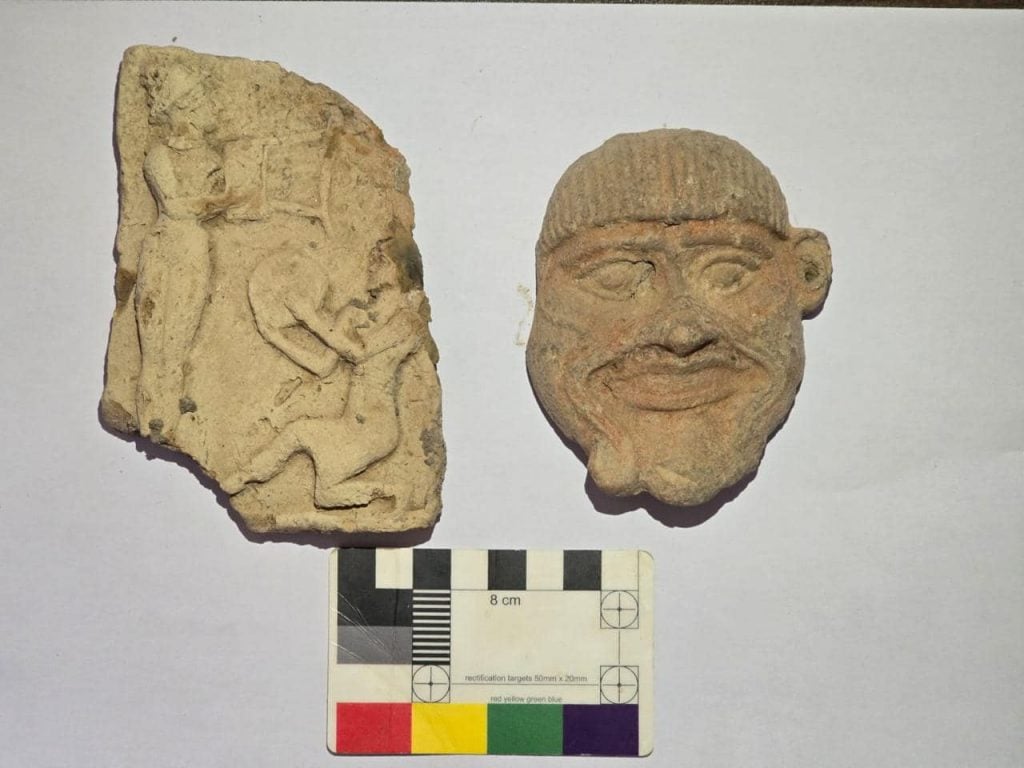While excavating the 19/3 site in Iraq’s Al-Fayadiya district, a team led by archaeologist Quhtan Abbas Hassan Aboud has discovered two dwellings filled with almost 500 artifacts, giving new insight into the lives of its prehistoric residents.
Among the 478 artifacts found during the milestone mission were cylindrical seals, cuneiform tablets, and pottery vessels. The artistry demonstrated in each of the artifacts is a testament to ancient Babylonian visual culture, and is helping researchers to piece together the trajectory of the region’s iconography.

Cuneiform Tablets (2024). Photo: Iraqi State Board of Antiquities and Heritage.
Cuneiform is the earliest form of writing, first used more than 5000 years ago—predating Egyptian hieroglyphics. Writers would press the sides of a reed stylus into a clay tablet to create a series of marks, and these tablets would be enclosed in a corresponding clay case – a precursor of the modern envelope. It wasn’t until the Victorian era that cuneiform was deciphered again after ancient times. These clay tablets are incredibly durable as they can withstand exposure to fire.
Cylindrical seals were used by all members of society—regardless of rank—in ancient Mesopotamia as a method of proving ownership or signing ones name, as on a legal document. The surface of the seal featured a variety of iconographic symbols, identifying the user and leaving an impression of the images onto wet clay when rolled across the surface. Seals were typically around an inch tall and were made from hardy materials, on occasion made from precious stones. High numbers of seals from all ancient Mesopotamian periods survive, and they have helped historians to track aesthetic developments in the region.

Cylindrical seals (2024). Photo: Iraqi State Board of Antiquities and Heritage.
The residential structures were found in Sector B of area 19/3, covering a 9,000 square meter (almost 30,000 foot) range. Rooms of various sizes were found, giving archaeologists clues about what each space may have been used for. The two layers excavated dated to the Sasanian period—an empire ruled between 224–651 C.E—and the ancient Babylonian period—ruled between ca. 1894 and 1595 B.C.E. The deeper Babylonian layer is considerably better preserved than the upper Sasanian one, which has been damaged due to erosion and human intervention. The area has been inhabited since 4800 B.C.E. when Mesopotamia was home to the Sumerians – one of the world’s first major civilizations.

Decorative pottery (2024). Photo: Iraqi State Board of Antiquities and Heritage.
According to a Facebook status put out on October 12 by Iraq’s Authority for Antiques and Heritage, the Missions Committee and the Director of the Excavation Department, Suhail Al-Tamimi, recommended that further digging be undertaken and documentation about the finds be published according to the standards of the Iraqi State Board of Antiquities and Heritage.
Further excavation of the area and research into the artifacts is planned, but experts are already hopeful that these discoveries are a breakthrough in our understanding about ancient Babylonian lives and the development of its material culture.
Credit: artnet







